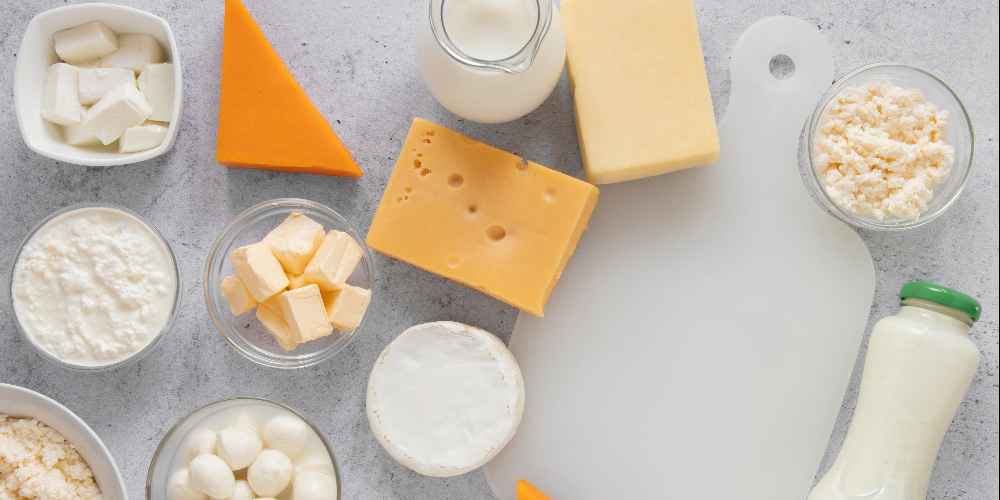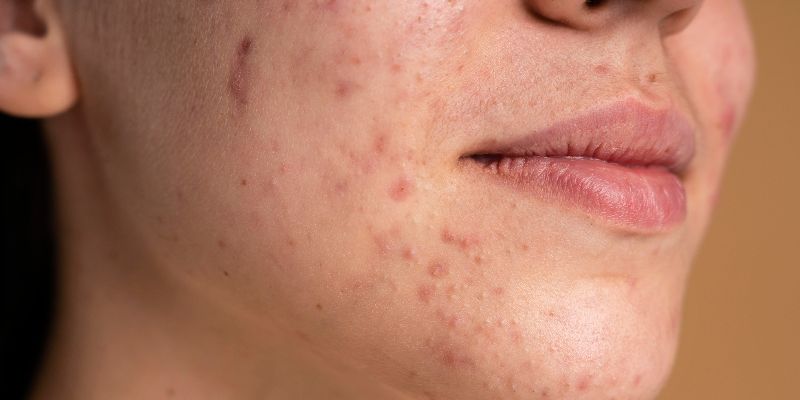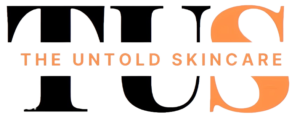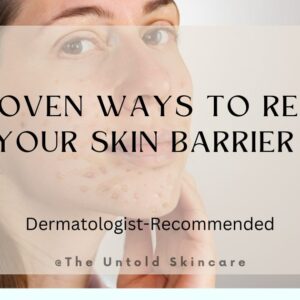It’s no secret that the quest for clear, blemish-free skin is a common concern for many of us.
We’ve all heard the age-old advice about maintaining a proper skincare routine but what if I told you that one of the most common items in your fridge might be sabotaging your quest for perfect skin?
That’s right, we’re talking about dairy and its mysterious connection to those pesky pimples.
But does the evidence support these claims? And the answer is yes.
In this article, we’ll dive deep into the surprising link between dairy consumption and skin issues, unraveling the science and exploring alternatives for a blemish-free complexion.
Understanding The Link Between Dairy and Skin

The link between dairy and skin health is complex and varies among individuals.
Milk mainly contains two components, 80% casein and 20% whey protein. The casein factor of milk raises the Insulin-Like Growth Factor (IGF-1) concentration and the whey protein fraction of milk raises the Insulin concentration. This is where all the trouble begins.
Casein and Whey Protein stimulate sebum production
These are the most crucial signaling proteins that increase insulin/IGF-I signaling for the survival and growth of neonatal mammals. This mammalian milk signaling system has evolved over millions of years, and it is biologically and solely supplied to the baby during the nursing period.
These components are naturally present in dairy products and have been directly associated with increased sebum production. Several studies have shown that the IGF-1 in milk can stimulate the production of sebum, thus increasing the likelihood of developing pimples.
Milk consumption mimics the puberty-signaling
Puberty is a stage of insulin resistance accompanied by higher hepatic IGF-1 production and increased growth hormone release. What milk consumption does is that it mimics the endocrine signaling of puberty, thus increasing the growth hormone (GH) and IGF-1 plasma levels.
It’s been suggested that the primary cause of the acne epidemic and other more serious chronic Western diseases are caused by the extensive use of milk and other dairy products.
Lactose in Dairy increases inflammation
Inflammation is a key factor in almost all skin issues.
Dairy products can contain lactose, a sugar found in milk. Lactose has been suggested to have inflammatory properties, meaning it may trigger an immune response that can further contribute to acne.
This inflammatory response can cause redness, swelling, and the formation of pimples. It can even exacerbate existing skin conditions, like acne, and make them more persistent.
It promotes acne pathogenesis
It has been found that eating meals high in insulinemic factors, which enhance the growth factors that signal insulin and insulin-like growth factor-I (IGF-I), has a significant role in acne pathogenesis.
Insulinemic foods, such as refined sugars, wheat, potatoes, milk, and dairy products, are common in the diets of most Westerners and account for almost half of daily energy intake. As a result, more than 80% of Western adolescents are affected by acne and pimples.
In contrast, there are no acne-related issues in non-Westernized populations like the Inuit, Okinawans, Ache hunters and gatherers, and Kitavan Islanders, who do not consume milk and dairy products and consume fewer carbohydrates.
Acne can be thought of as the skin’s obvious metabolic condition, exhibiting the daily negative effects of an excessively insulinotropic diet.
Dairy Consumption causes deficiency of FoxO1
Forkhead box O1 (FoxO1) is a transcription factor that plays a significant role in skin biology and is essential for maintaining various aspects of skin health and function.
FoxO1 is primarily located in the cell’s nucleus, where it can act as a transcription factor, controlling the expression of specific genes. When it is exported from the nucleus to the cytoplasm, its transcriptional activity is inhibited.
The continuous growth factor signaling due to increased dairy consumption overstimulates the export of FoxO1 into the cytoplasm. A deficit of nuclear FoxO1 due to elevated insulin/IGF-I signaling elevates all major mechanisms involved in acne pathogenesis.
Dairy Effects on Skin: How it Affects the Skin?
Now that we’ve established the potential link between dairy and skin issues, let’s delve deeper into the effects of dairy consumption on the skin.
One of the most well-known associations between dairy and skin is the potential link between dairy consumption and acne. Milk can cause pimples and that is very much true. A data of Nurses Health Study II which included 47,355 women who answered questionnaires on their high school diet and severe adolescent acne, revealed a favorable correlation between milk intake and acne.
Data shows that when comparing acne patients to the normal group of people, the number of individuals consuming milk and dairy products on a daily basis is five times higher.
Dairy also causes inflammation in the body which can manifest on the skin in the form of lots of skin issues.

Some individuals with eczema may find that their condition worsens with dairy consumption. Dairy can be an allergenic food for some people, and this allergic response can trigger or worsen eczema symptoms.
Dairy products may aggravate the symptoms of rosacea in some individuals. It can also lead to hives, which are red, itchy welts on the skin.
People with lactose intolerance often experience skin issues, like eczema. The body’s inability to properly digest lactose can lead to inflammation, causing redness, itchiness, and flaky skin. Dairy sensitivity can manifest in the form of hives, itching, or a burning sensation on the skin. The immune system’s response to lactose can trigger these uncomfortable skin reactions.
Different Forms of Milk and Their Effects on Skin
Whole milk has a higher content of fat compared to other forms of milk. Since hormones are concentrated in the fat content of dairy, whole milk is often considered the worst for skin health. Study shows that people who consume low-fat milk have 66% lesser chances of having acne.
Also, the insulinemic indices (II) value of whole milk (about 150) is higher than other forms of milk which is a measure of how much a particular food can increase the insulin level in the body.
However, the association between acne and milk intake has been found to be strongest for skim milk. The processing of skim milk is thought to change the relative bioavailability of bioactive compounds that can alter the balance of hormonal constituents of skim milk.
Similarly, all dairy products, including yogurt, ice cream, cottage cheese, and fermented milk products, have strong insulinotropic effects, with the exception of cheese, which has an II of 45.
Stop Consuming Whey Protein Powder
Whey protein powder is a popular dietary supplement used by individuals, especially those engaged in strength training or bodybuilding, to support muscle gain and recovery.
The daily consumption of 40-80 gm of whey protein is a common practice in periods of muscular training. One liter of milk contains about 6.6 gm of whey proteins, so 40-80 gm of whey protein is equivalent to 6-12 liters of milk.
Dairy-Free Path: Best Alternatives For Dairy
There are plenty of options available that can provide essential nutrients without the potential side effects of dairy on the skin.
One of the best alternatives to dairy milk is plant-based milk. Almond milk, soy milk, and oat milk are all excellent substitutes that can be used in place of dairy milk in your favorite recipes and beverages.
Not only are these plant-based milks lower in hormones, but they also have a lower glycemic index, which means they won’t cause the same spike in blood sugar levels as dairy milk. This can be beneficial for individuals prone to acne as it reduces the likelihood of stimulating sebum production.
Non-dairy cheeses are another great option for those looking to eliminate or reduce their dairy intake. These cheeses are often made from nuts or soy and can provide a similar taste and texture to traditional cheese. Some popular choices include almond-based feta, cashew-based mozzarella, and soy-based cheddar.
When it comes to yogurt, there are many dairy-free options available as well. Coconut milk yogurt, almond milk yogurt, and soy milk yogurt are all tasty alternatives that can be enjoyed on their own or added to smoothies and desserts. These alternatives provide the same creamy texture and probiotic benefits as dairy yogurt, without the potential effects on the skin.
Also Read: How to Get Clear Skin? 20 Tips That Include Everything
Tips for Managing Pimples While Still Consuming Dairy
Managing acne can be challenging, especially if you’re a fan of dairy products. While cutting out dairy altogether may be an effective solution for some, it’s not always necessary or feasible for everyone. If you still want to enjoy dairy while minimizing its impact on your skin, here are some tips to help you manage your acne:
1. Choose low-fat dairy options:
Whole milk and full-fat cheeses may have a higher hormonal content, which can potentially exacerbate acne. Opt for low-fat milk, and choose reduced-fat cheeses whenever possible. This can help reduce the hormonal load you’re consuming and minimize the impact on your skin.
2. Pay attention to portion sizes:
Moderation is key. While it’s tempting to indulge in that big bowl of ice cream or extra cheesy pizza, it’s important to be mindful of portion sizes. Consuming large amounts of dairy in one sitting can increase the likelihood of triggering acne flare-ups. Stick to smaller servings to help minimize potential effects on your skin.
3. Be mindful of other potential acne triggers:
While dairy is often blamed for causing acne, it’s important to consider other factors that can contribute to breakouts. Hormonal imbalances, stress, and a high-glycemic diet can all impact the health of your skin. Make sure you’re addressing these factors as well to effectively manage your acne.
4. Focus on a balanced diet:
While dairy may play a role in acne development for some individuals, it’s important to maintain a well-rounded and balanced diet overall. Make sure you’re getting a variety of fruits, vegetables, whole grains, and lean proteins to support healthy skin. Incorporating foods rich in antioxidants, like berries and leafy greens, can also help reduce inflammation and promote clear skin.
5. Goat’s and Sheep’s Milk:
If you’re craving a dairy fix but want to avoid skin issues, consider trying goat or sheep milk products. They have a different protein profile that may be gentler on your skin.
Listen to Your Body
It’s worth noting that some individuals may be more susceptible to the effects of dairy on their skin than others. This can be influenced by genetic factors, hormonal imbalances, and even individual sensitivities to certain components in dairy products. Therefore, it’s important to listen to your body and pay attention to how your skin reacts to dairy consumption.
If you suspect that dairy may be contributing to your acne, it might be worth experimenting with a dairy-free diet to see if your skin improves. Many individuals have reported significant improvements in their skin after cutting out or reducing their dairy consumption.
Frequently Asked Questions
1. Does milk give you pimples?
Yes, milk can give you pimples as it raises the insulin level and insulin-like growth factor (IGF-1) concentration in the body. These are directly related to a number of skin issues.
2. Does Cheese Cause Pimples?
Cheese is less likely to cause pimples as its insulinemic indices value is extremely low and does not significantly increase the insulin level in the blood.
3. Does Yogurt Cause Pimples?
Yogurt can cause pimples if it is sweetened or contains artificial ingredients. Plain, unsweetened yogurt is generally considered a better option for skin health.
4. Which is the best milk for skin?
Almond milk and coconut milk are the best types of milk for the skin and are great dairy-free alternatives.





